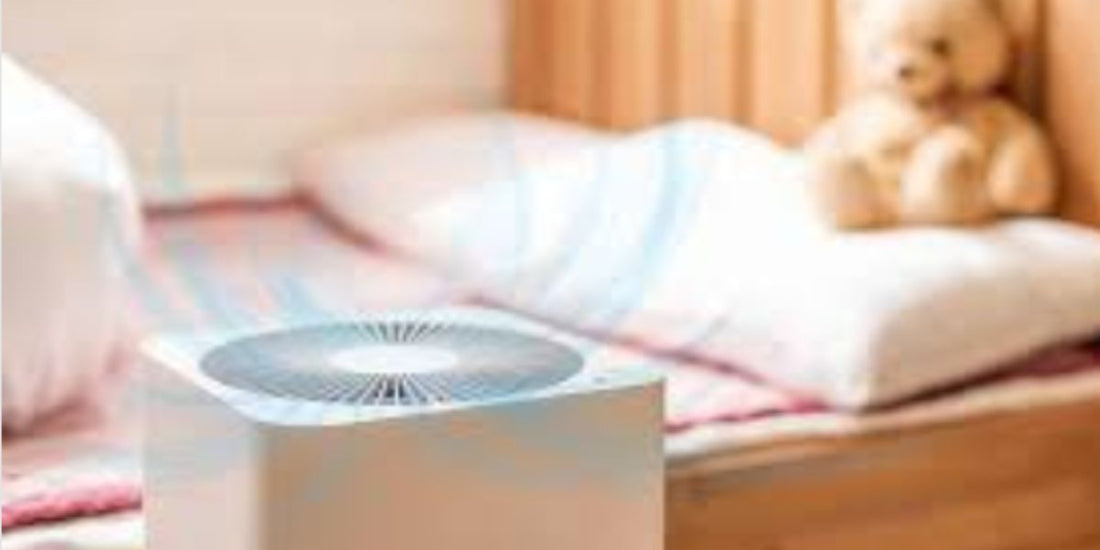Understanding Harmful Chemicals and VOCs:
Harmful chemicals and VOCs are common indoor air pollutants that can have adverse effects on our health. VOCs are organic compounds that can vaporize at room temperature and are often released by various household products, such as cleaning agents, paints, solvents, furniture, carpets, and even personal care products. These chemicals can contribute to poor indoor air quality and may cause short-term symptoms like eye and respiratory irritation or more long-term health effects.Air Purification Technologies for Chemical and VOC Removal:
Different air purifiers utilize various technologies to capture and reduce harmful chemicals and VOCs in the air. Let's explore some of the key technologies known for their effectiveness in this regard:1.Activated Carbon Filters:
Activated carbon filters are commonly used in air purifiers to adsorb and trap VOCs and odorous substances. Activated carbon has a highly porous structure that provides a large surface area for chemical adsorption. When air passes through the filter, the VOC molecules become attracted to the carbon's surface and are effectively removed from the air. This technology is particularly effective in reducing unpleasant odors and eliminating chemicals like formaldehyde and benzene.2.Gas Phase Filtration:
Some air purifiers employ specialized gas-phase filtration systems that are designed to target and remove specific harmful chemicals and VOCs. These filters typically contain specific media, such as activated carbon impregnated with specific chemicals or catalysts, to enhance the removal of targeted pollutants. Gas-phase filtration systems are particularly useful in environments where specific chemicals or VOCs are a concern, such as industrial areas or spaces with high chemical exposure.3.Photocatalytic Oxidation (PCO):
Photocatalytic oxidation is a technology that combines UV light and a catalyst, often titanium dioxide (TiO2), to break down harmful chemicals and VOCs into harmless substances. When UV light interacts with the catalyst, it triggers a reaction that oxidizes the pollutants, converting them into carbon dioxide and water vapor. PCO is effective in reducing certain VOCs and eliminating strong odors, but its performance can vary depending on the specific pollutants and the quality of the catalyst used.4.High-Efficiency Particulate Air (HEPA) Filters:
While HEPA filters are primarily designed to capture airborne particles, they can also help indirectly reduce certain harmful chemicals and VOCs. Some VOCs can attach to particles like dust or pet dander, and when these particles are captured by the HEPA filter, the VOCs are effectively removed from the air. However, it's important to note that HEPA filters alone may not be as effective as specialized technologies when it comes to directly targeting and removing VOCs.Factors to Consider for Effective Chemical and VOC Removal:
While air purifiers can contribute to reducing harmful chemicals and VOCs in indoor environments, there are several factors to consider to ensure their effectiveness:Proper Maintenance:
Regular maintenance is crucial for optimal air purifier performance. This includes changing or cleaning filters as recommended by the manufacturer, as dirty or saturated filters may become less efficient at capturing pollutants.Sufficient Air Exchange Rate:
To effectively remove chemicals and VOCs, it's important to ensure proper ventilation in the room or area. This can be achieved by opening windows or using mechanical ventilation systems to bring in fresh outdoor air and help dilute indoor pollutants.Source Control:
While air purifiers can help reduce airborne chemicals and VOCs, addressing the source of these pollutants is equally important. Whenever possible, limit the use of products that release harmful chemicals, choose low-VOC or environmentally friendly alternatives, and properly ventilate areas where chemicals are used.Consider Multiple Technologies:
For spaces with significant chemical or VOC concerns, consider air purifiers that utilize multiple technologies, such as activated carbon filters in combination with other specialized filtration systems. This can enhance the overall effectiveness of the air purifier in capturing a wider range of pollutants.
Conclusion:
Air purifiers can play a valuable role in reducing harmful chemicals and VOCs in indoor environments, but their effectiveness depends on various factors, including the specific technologies employed and the pollutant concentration. Activated carbon filters, gas-phase filtration, photocatalytic oxidation, and HEPA filters all contribute to the removal of chemicals and VOCs to varying degrees. It's important to select an air purifier with the appropriate filtration technologies for your specific needs, ensure proper maintenance, and address pollutant sources for the best possible indoor air quality. While air purifiers are a valuable tool, they should be used in conjunction with other measures, such as proper ventilation and source control, to create a healthier living environment.

